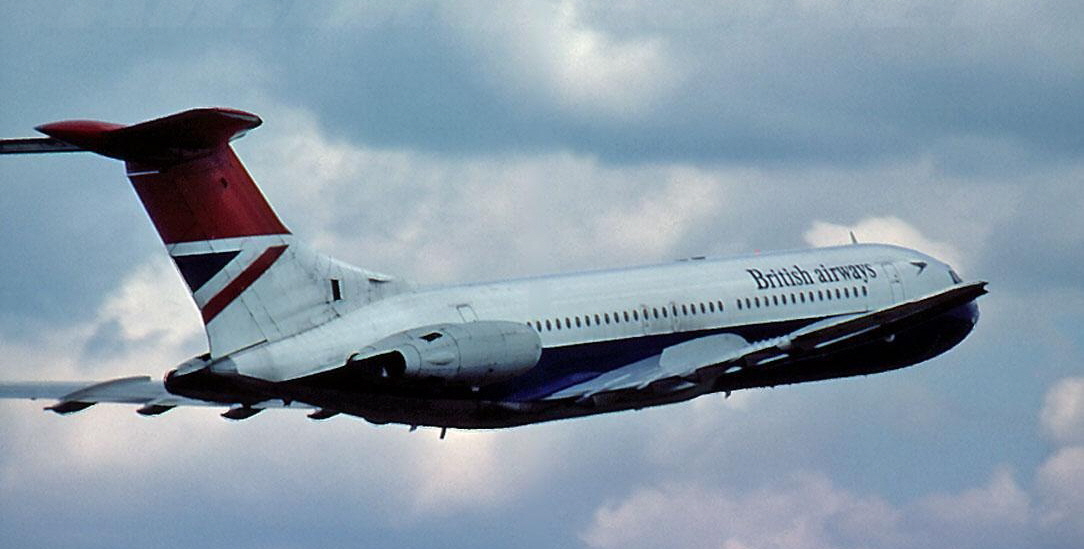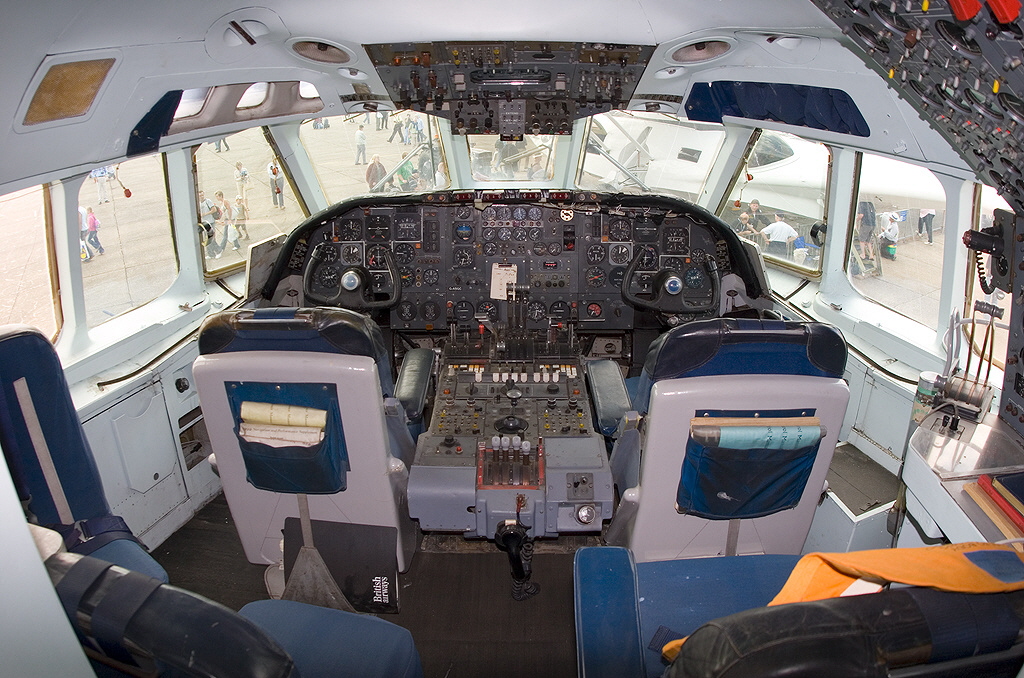 The Vickers VC10 was a long-range airliner designed and built by Vickers - Armstrong (Aircraft) Ltd, and first flown at Brooklands, Surrey, in 1962. The airliner was designed to operate on long-distance routes from the shorter runways of the era with a high subsonic speed, and demanded excellent hot and high performance for operations from African airports. The performance of the VC10 was such that it achieved the fastest London to New York crossing of the Atlantic by a jet airliner, a record still held to date for a sub-sonic airliner - only Concorde was faster. The VC10 is often compared to the larger Soviet Ilyushin Il-62, both aircraft having a rear-engined quad layout, the two types being the only airliners with such a configuration (a configuration that they shared with the earlier, but smaller Lockheed JetStar). Although only a relatively small number of VC10 aircraft were built (54), they provided long service with BOAC and other airlines from the 1960s to 1981. They were also used from 1965 as strategic air lifters for the Royal Air Force, and former passenger models and others were used as aerial refuelling aircraft. The 50th anniversary of the first flight of the prototype VC10 aircraft, G-ARTA, was celebrated with a 'VC10 Retrospective' Symposium and the official opening of a VC10 exhibition at Brooklands Museum on 29 June 2012. The type was finally retired from RAF service on 20 September 2013.
The Vickers VC10 was a long-range airliner designed and built by Vickers - Armstrong (Aircraft) Ltd, and first flown at Brooklands, Surrey, in 1962. The airliner was designed to operate on long-distance routes from the shorter runways of the era with a high subsonic speed, and demanded excellent hot and high performance for operations from African airports. The performance of the VC10 was such that it achieved the fastest London to New York crossing of the Atlantic by a jet airliner, a record still held to date for a sub-sonic airliner - only Concorde was faster. The VC10 is often compared to the larger Soviet Ilyushin Il-62, both aircraft having a rear-engined quad layout, the two types being the only airliners with such a configuration (a configuration that they shared with the earlier, but smaller Lockheed JetStar). Although only a relatively small number of VC10 aircraft were built (54), they provided long service with BOAC and other airlines from the 1960s to 1981. They were also used from 1965 as strategic air lifters for the Royal Air Force, and former passenger models and others were used as aerial refuelling aircraft. The 50th anniversary of the first flight of the prototype VC10 aircraft, G-ARTA, was celebrated with a 'VC10 Retrospective' Symposium and the official opening of a VC10 exhibition at Brooklands Museum on 29 June 2012. The type was finally retired from RAF service on 20 September 2013.
The VC10 was a new design but used some existing production ideas and techniques, as well as the Conway engines, developed for a previous Vickers design. It had a generous wing equipped with wide chord Fowler flaps and full span leading edge slats for good take-off and climb performance and its rear engines gave an efficient clean wing and reduced cabin noise. The engines were also higher up from the runway surface than an underwing design minimising damage from items like stones or debris on the runway - of importance considering the nature of the African runways. Technology included structural parts milled from solid blocks rather than assembled from sheet metal, which gave this aircraft immense strength. The following incident that occurred to a British Caledonian VC10 in June 1971 gives a good idea of the inherent strength of the design.
During a flight across the Andes from Buenos Aires, Argentina to Santiago in Chile, British Caledonian aircraft e G-ASIX got caught in a patch of clear air turbulence above the mountain peaks. The aircraft was thrown up on to its side at a 90-degree-plus back angle and then tossed, headlong, nose down towards the peaks a few thousand feet below (The mountains reaching up to 27.000 feet placed them close at hand) reaching speeds up to Mach 0.96 during the event. The severity of the upset caused the PCUs (power control units) on several flying control surfaces to be knocked out of action leaving the crew with an airplane plummeting downwards with speeds varying between the stall and high-speed buffet. With very little control authority the crew managed a recovery, resetting the other PCUs along the way. The airplane landed safely at its destination and after a thorough ground check was despatched on its next flight back home to Gatwick via Freetown. During the Freetown - Gatwick leg an unusual vibration was noticed in the airframe which increased in severity. On landing it became clear that a part of the leading edge of the stabiliser had detached and the leading edge spar of the fin was broken. Furthermore the wing torsion box turned out to be distorted with the wing tips bent upwards some four feet. The combined damage required a lengthy repair and only after several months in the hangar did G-ASIX fly again. The incident proved the strength of the VC10 airframe as other aircraft in previous similar situations had lost structural integrity and crashed. On an airliner with wing mounted engines the engine mounting pins would probably have snapped as the aircraft was spun around.

The Royal Air Force was the other major operator of this aircraft, initially using them world-wide as transport / passenger aircraft before converting them for an in-flight refuelling role role. Although the aircraft had been retired from commercial service many years before, the final flights of the VC10 in RAF service took place on 20 September 2013 when the final refuelling sortie was followed by a tour of the UK. On 24 September, RAF aircraft ZA150 had its last flight to Dunsfold Aerodrome for preservation at the Brooklands Museum, while aircraft ZA147 arrived at Bruntingthorpe on 25 September.

